Zongjian Li
Bringing Diversity from Diffusion Models to Semantic-Guided Face Asset Generation
Apr 21, 2025Abstract:Digital modeling and reconstruction of human faces serve various applications. However, its availability is often hindered by the requirements of data capturing devices, manual labor, and suitable actors. This situation restricts the diversity, expressiveness, and control over the resulting models. This work aims to demonstrate that a semantically controllable generative network can provide enhanced control over the digital face modeling process. To enhance diversity beyond the limited human faces scanned in a controlled setting, we introduce a novel data generation pipeline that creates a high-quality 3D face database using a pre-trained diffusion model. Our proposed normalization module converts synthesized data from the diffusion model into high-quality scanned data. Using the 44,000 face models we obtained, we further developed an efficient GAN-based generator. This generator accepts semantic attributes as input, and generates geometry and albedo. It also allows continuous post-editing of attributes in the latent space. Our asset refinement component subsequently creates physically-based facial assets. We introduce a comprehensive system designed for creating and editing high-quality face assets. Our proposed model has undergone extensive experiment, comparison and evaluation. We also integrate everything into a web-based interactive tool. We aim to make this tool publicly available with the release of the paper.
Open-Sora Plan: Open-Source Large Video Generation Model
Nov 28, 2024


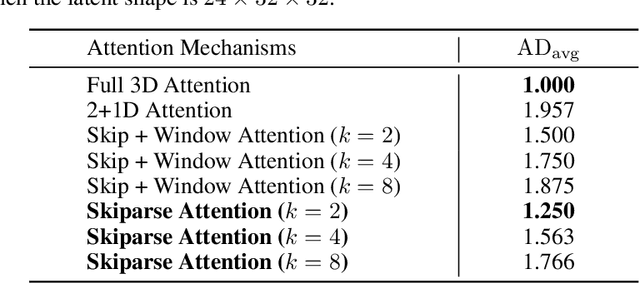
Abstract:We introduce Open-Sora Plan, an open-source project that aims to contribute a large generation model for generating desired high-resolution videos with long durations based on various user inputs. Our project comprises multiple components for the entire video generation process, including a Wavelet-Flow Variational Autoencoder, a Joint Image-Video Skiparse Denoiser, and various condition controllers. Moreover, many assistant strategies for efficient training and inference are designed, and a multi-dimensional data curation pipeline is proposed for obtaining desired high-quality data. Benefiting from efficient thoughts, our Open-Sora Plan achieves impressive video generation results in both qualitative and quantitative evaluations. We hope our careful design and practical experience can inspire the video generation research community. All our codes and model weights are publicly available at \url{https://github.com/PKU-YuanGroup/Open-Sora-Plan}.
WF-VAE: Enhancing Video VAE by Wavelet-Driven Energy Flow for Latent Video Diffusion Model
Nov 26, 2024Abstract:Video Variational Autoencoder (VAE) encodes videos into a low-dimensional latent space, becoming a key component of most Latent Video Diffusion Models (LVDMs) to reduce model training costs. However, as the resolution and duration of generated videos increase, the encoding cost of Video VAEs becomes a limiting bottleneck in training LVDMs. Moreover, the block-wise inference method adopted by most LVDMs can lead to discontinuities of latent space when processing long-duration videos. The key to addressing the computational bottleneck lies in decomposing videos into distinct components and efficiently encoding the critical information. Wavelet transform can decompose videos into multiple frequency-domain components and improve the efficiency significantly, we thus propose Wavelet Flow VAE (WF-VAE), an autoencoder that leverages multi-level wavelet transform to facilitate low-frequency energy flow into latent representation. Furthermore, we introduce a method called Causal Cache, which maintains the integrity of latent space during block-wise inference. Compared to state-of-the-art video VAEs, WF-VAE demonstrates superior performance in both PSNR and LPIPS metrics, achieving 2x higher throughput and 4x lower memory consumption while maintaining competitive reconstruction quality. Our code and models are available at https://github.com/PKU-YuanGroup/WF-VAE.
OD-VAE: An Omni-dimensional Video Compressor for Improving Latent Video Diffusion Model
Sep 02, 2024Abstract:Variational Autoencoder (VAE), compressing videos into latent representations, is a crucial preceding component of Latent Video Diffusion Models (LVDMs). With the same reconstruction quality, the more sufficient the VAE's compression for videos is, the more efficient the LVDMs are. However, most LVDMs utilize 2D image VAE, whose compression for videos is only in the spatial dimension and often ignored in the temporal dimension. How to conduct temporal compression for videos in a VAE to obtain more concise latent representations while promising accurate reconstruction is seldom explored. To fill this gap, we propose an omni-dimension compression VAE, named OD-VAE, which can temporally and spatially compress videos. Although OD-VAE's more sufficient compression brings a great challenge to video reconstruction, it can still achieve high reconstructed accuracy by our fine design. To obtain a better trade-off between video reconstruction quality and compression speed, four variants of OD-VAE are introduced and analyzed. In addition, a novel tail initialization is designed to train OD-VAE more efficiently, and a novel inference strategy is proposed to enable OD-VAE to handle videos of arbitrary length with limited GPU memory. Comprehensive experiments on video reconstruction and LVDM-based video generation demonstrate the effectiveness and efficiency of our proposed methods.
AGFSync: Leveraging AI-Generated Feedback for Preference Optimization in Text-to-Image Generation
Mar 24, 2024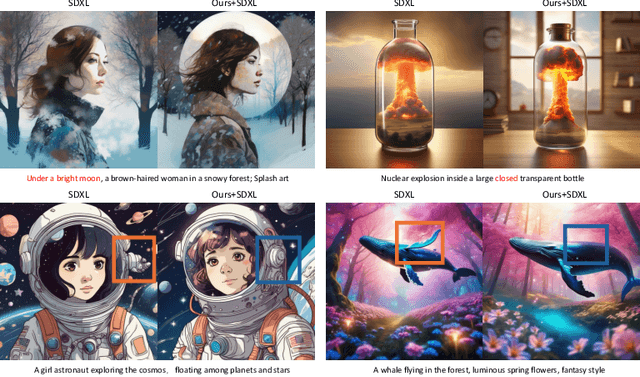
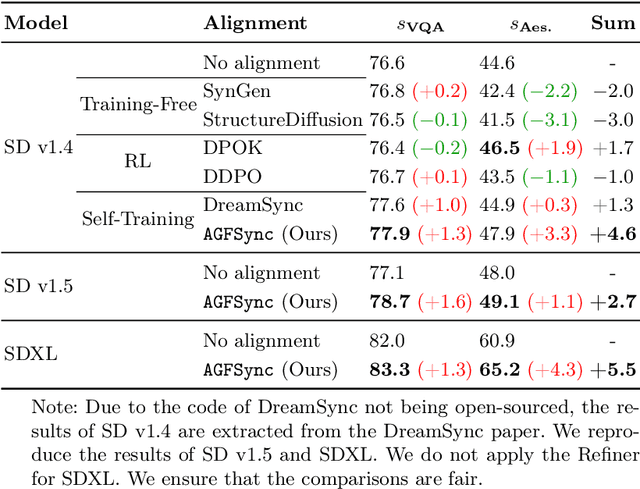
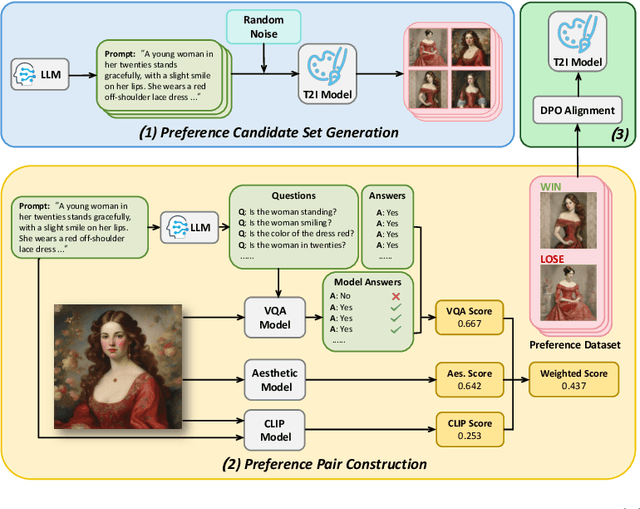
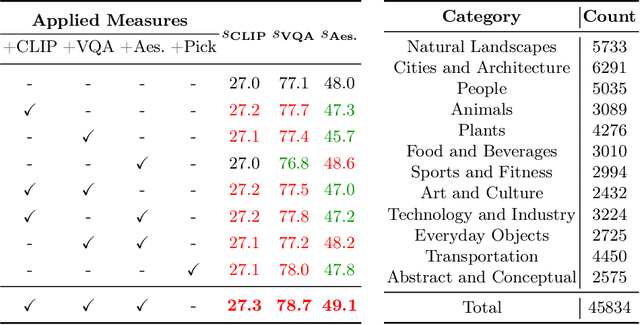
Abstract:Text-to-Image (T2I) diffusion models have achieved remarkable success in image generation. Despite their progress, challenges remain in both prompt-following ability, image quality and lack of high-quality datasets, which are essential for refining these models. As acquiring labeled data is costly, we introduce AGFSync, a framework that enhances T2I diffusion models through Direct Preference Optimization (DPO) in a fully AI-driven approach. AGFSync utilizes Vision-Language Models (VLM) to assess image quality across style, coherence, and aesthetics, generating feedback data within an AI-driven loop. By applying AGFSync to leading T2I models such as SD v1.4, v1.5, and SDXL, our extensive experiments on the TIFA dataset demonstrate notable improvements in VQA scores, aesthetic evaluations, and performance on the HPSv2 benchmark, consistently outperforming the base models. AGFSync's method of refining T2I diffusion models paves the way for scalable alignment techniques.
LibreFace: An Open-Source Toolkit for Deep Facial Expression Analysis
Aug 24, 2023



Abstract:Facial expression analysis is an important tool for human-computer interaction. In this paper, we introduce LibreFace, an open-source toolkit for facial expression analysis. This open-source toolbox offers real-time and offline analysis of facial behavior through deep learning models, including facial action unit (AU) detection, AU intensity estimation, and facial expression recognition. To accomplish this, we employ several techniques, including the utilization of a large-scale pre-trained network, feature-wise knowledge distillation, and task-specific fine-tuning. These approaches are designed to effectively and accurately analyze facial expressions by leveraging visual information, thereby facilitating the implementation of real-time interactive applications. In terms of Action Unit (AU) intensity estimation, we achieve a Pearson Correlation Coefficient (PCC) of 0.63 on DISFA, which is 7% higher than the performance of OpenFace 2.0 while maintaining highly-efficient inference that runs two times faster than OpenFace 2.0. Despite being compact, our model also demonstrates competitive performance to state-of-the-art facial expression analysis methods on AffecNet, FFHQ, and RAF-DB. Our code will be released at https://github.com/ihp-lab/LibreFace
ChatLaw: Open-Source Legal Large Language Model with Integrated External Knowledge Bases
Jun 28, 2023Abstract:Large Language Models (LLMs) have shown the potential to revolutionize natural language processing tasks in various domains, sparking great interest in vertical-specific large models. However, unlike proprietary models such as BloombergGPT and FinGPT, which have leveraged their unique data accumulations to make strides in the finance domain, there hasn't not many similar large language models in the Chinese legal domain to facilitate its digital transformation. In this paper, we propose an open-source legal large language model named ChatLaw. Due to the importance of data quality, we carefully designed a legal domain fine-tuning dataset. Additionally, to overcome the problem of model hallucinations in legal data screening during reference data retrieval, we introduce a method that combines vector database retrieval with keyword retrieval to effectively reduce the inaccuracy of relying solely on vector database retrieval. Furthermore, we propose a self-attention method to enhance the ability of large models to overcome errors present in reference data, further optimizing the issue of model hallucinations at the model level and improving the problem-solving capabilities of large models. We also open-sourced our model and part of the data at https://github.com/PKU-YuanGroup/ChatLaw.
 Add to Chrome
Add to Chrome Add to Firefox
Add to Firefox Add to Edge
Add to Edge